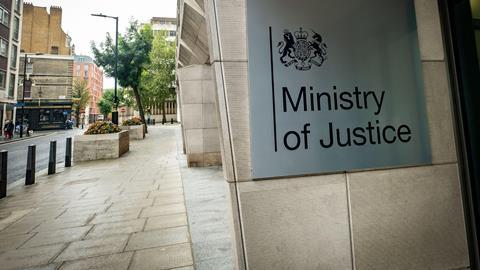The government has confirmed that fixed costs will be uplifted where the claimant or witness is vulnerable.
In the final rules for the extention of fixed recoverable costs, laid down through a statutory instrument in parliament last week, the Ministry of Justice included a provision for vulnerability and said the court may consider increasing the amounts in certain circumstances.
This increase will only apply where a party or witness for the party is vulnerable and where that vulnerability has required additional work to be undertaken.
Lawyers can claim for a 20% uplift on the amount of fixed recoverable costs, with the court able to assess the costs and make an order for them to be subject to detailed assessment.
The decision to include vulnerability in rule 45.10 of the new CPR was made following consultation last year.
The MoJ received 38 responses, of which 15 were broadly supportive of the proposals and the desire to reconsider measures for vulnerable people.
Defendant respondents generally felt that vulnerability had already been considered in existing fixed cost rates as part of the ‘swings and roundabouts’ of litigation, and some feared this would generate an unnecessary ‘windfall’ for claimant solicitors. It was argued in certain responses that this would undermine the principle of ‘fixed costs’ and drive a ‘trojan horse’ through existing FRC regimes.
Claimant lawyers, on the other hand, were supportive of the principle that vulnerable parties generated extra work and therefore cost. They suggested that the vulnerability rule should apply to all fixed costs cases, and not just to those in the extended regime.
One of those to respond, the Bar Council, had called for judges to be given flexibility in how they apply any uplift to fixed costs. It said: ‘To place vulnerable litigants in a position where they have to show that a precise amount of extra work is attributable to a vulnerability is unrealistic as it will involve a hypothetical comparison with a litigant who is not vulnerable.’
John McQuater, immediate past president of the Association of Personal Injury Lawyers, said this week: 'We welcome the recognition that cases involving vulnerability have the potential to attract additional costs. But there is a danger that the new rule is simply tokenistic and will not be used in practice, as potential applicants will not wish to incur penalties if their applications are unsuccessful.
'There should be no costs penalties attached to applications and, while vulnerability should not be defined, there should be broad guidance on the sorts of circumstances in which an uplift would be granted for a vulnerable client.'
The government resolved that the new vulnerability provision should be applied to claims which, but for the reforms, would have been subject to the existing FRC regimes for personal injury cases in the current Part 45. There will not be any changes to the arrangements for disbursements for vulnerability in FRC cases.
The rule changes will come into force, as expected, on 1 October and apply to most claims worth up to £100,000. There will be a separate intermediate track for less complex multi-track cases under the £100,000 threshold.
Housing claims will not be part of the FRC extension for at least two years after the MoJ said it needed to do further work around this area. Other exemptions are mesothelioma or asbestos lung disease claims, a claim for damages in relation to harm, abuse or neglect of or by children or vulnerable adults, and claims against the police involving an intentional or reckless tort.
Despite opposition from practitioners, at this stage the plan is for clinical negligence claims to be included where breach of duty and causation have been admitted.




























2 Readers' comments